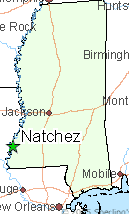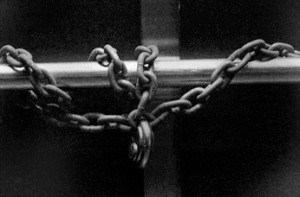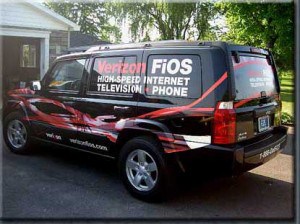 Cable subscribers in Natchez, Miss. are scratching their heads wondering why AT&T will neither confirm nor deny whether its fiber to the neighborhood U-verse service is coming to a neighborhood near them.
Cable subscribers in Natchez, Miss. are scratching their heads wondering why AT&T will neither confirm nor deny whether its fiber to the neighborhood U-verse service is coming to a neighborhood near them.
AT&T says if it told customers where the service was coming, it would give away vital information to its competition — the cable and satellite companies.
AT&T spokeswoman Sue Sperry says her competitors will stop at nothing to hang onto current customers, even if it means using predatory below-market-rate pricing.
“We’ve learned from experience that if they know what our footprint is, they go in and do retention offers and pretty much give their service away for next to nothing and then we can’t compete,” Sperry told the Natchez Democrat.
But considering its biggest competitor is locally-hated Cable One, a lot of customers would still be ready to switch even if AT&T sent the cable company its detailed business plans in advance.
“Unless you spend your weekends at the Bondage Bordello, there is nothing enjoyable about dealing with Cable One in Mississippi,” says Stop the Cap! reader DeWayne. “Last summer when their system went up and died on the folks over in Columbus, even the guy running it couldn’t tell when it was coming back.”

Top secret.
DeWayne started reading Stop the Cap! when we covered Cable One’s massive failure in August 2012 that brought all of its services in Columbus down while the company incredibly waited for express delivery of a replacement part. When customers could not get answers from Cable One over the phone, they lined up outside the local cable office only to learn from company general manager David Lusby he had no idea how many customers were affected by the outage or when the cable system would be back up and running.
“I hate AT&T but I hate Cable One more,” DeWayne said. “It is annoying that they won’t tell us when U-verse is coming to our neighborhood.”
Sperry claims AT&T U-verse is more robust than cable or satellite because it is powered by phone lines.
“That was one of the things during the hurricane, U-verse didn’t go out,” she told the newspaper. “It’s delivered through a phone line, and the phones are the last to go out.”
But unfortunately for customers, AT&T says it only rolls out U-verse in “a measured and slow way,” forcing customers to continually visit att.com and manually check availability using their home address.
But Sperry told the newspaper once customers get the service, they remain loyal to it. That may be especially true in smaller communities in Mississippi that cope with second rate cable operators not known for offering robust or affordable service.


 Subscribe
Subscribe

 Time Warner Cable is expanding its footprint in the capital region of New York with the acquisition of independent Princetown Cable Company, which serves around 600 subscribers in Princetown, Duanesburg and Rotterdam in Schenectady County.
Time Warner Cable is expanding its footprint in the capital region of New York with the acquisition of independent Princetown Cable Company, which serves around 600 subscribers in Princetown, Duanesburg and Rotterdam in Schenectady County. While a lot of people would love to get Verizon to wire their communities for the company’s fiber optic network, at least three New York City multi-dwelling unit property owners have told Verizon to get lost, in some cases telling the company none of their tenants were interested in the top-rated fiber to the home network, even as they remain without phone service three months after Hurricane Sandy damaged Verizon’s facilities in the city.
While a lot of people would love to get Verizon to wire their communities for the company’s fiber optic network, at least three New York City multi-dwelling unit property owners have told Verizon to get lost, in some cases telling the company none of their tenants were interested in the top-rated fiber to the home network, even as they remain without phone service three months after Hurricane Sandy damaged Verizon’s facilities in the city. boneheads that own my building that nobody was interested,” says Brad, a Stop the Cap! reader in Manhattan. “The morons at the property management company don’t have a clue or they want money from Verizon in return for the keys. Meanwhile, there is no dial tone and Verizon says they are at an impasse until the property owners, who obviously don’t care, let them in to do repairs.”
boneheads that own my building that nobody was interested,” says Brad, a Stop the Cap! reader in Manhattan. “The morons at the property management company don’t have a clue or they want money from Verizon in return for the keys. Meanwhile, there is no dial tone and Verizon says they are at an impasse until the property owners, who obviously don’t care, let them in to do repairs.”
 Time Warner Cable CEO Glenn Britt
Time Warner Cable CEO Glenn Britt 
 On Wednesday, the network announced it was acquired by Qatar-based Al-Jazeera, a kiss of death for most mainstream cable systems that are still unwilling to carry programming from a network the Bush Administration came close to calling ‘with the terrorists.’
On Wednesday, the network announced it was acquired by Qatar-based Al-Jazeera, a kiss of death for most mainstream cable systems that are still unwilling to carry programming from a network the Bush Administration came close to calling ‘with the terrorists.’
